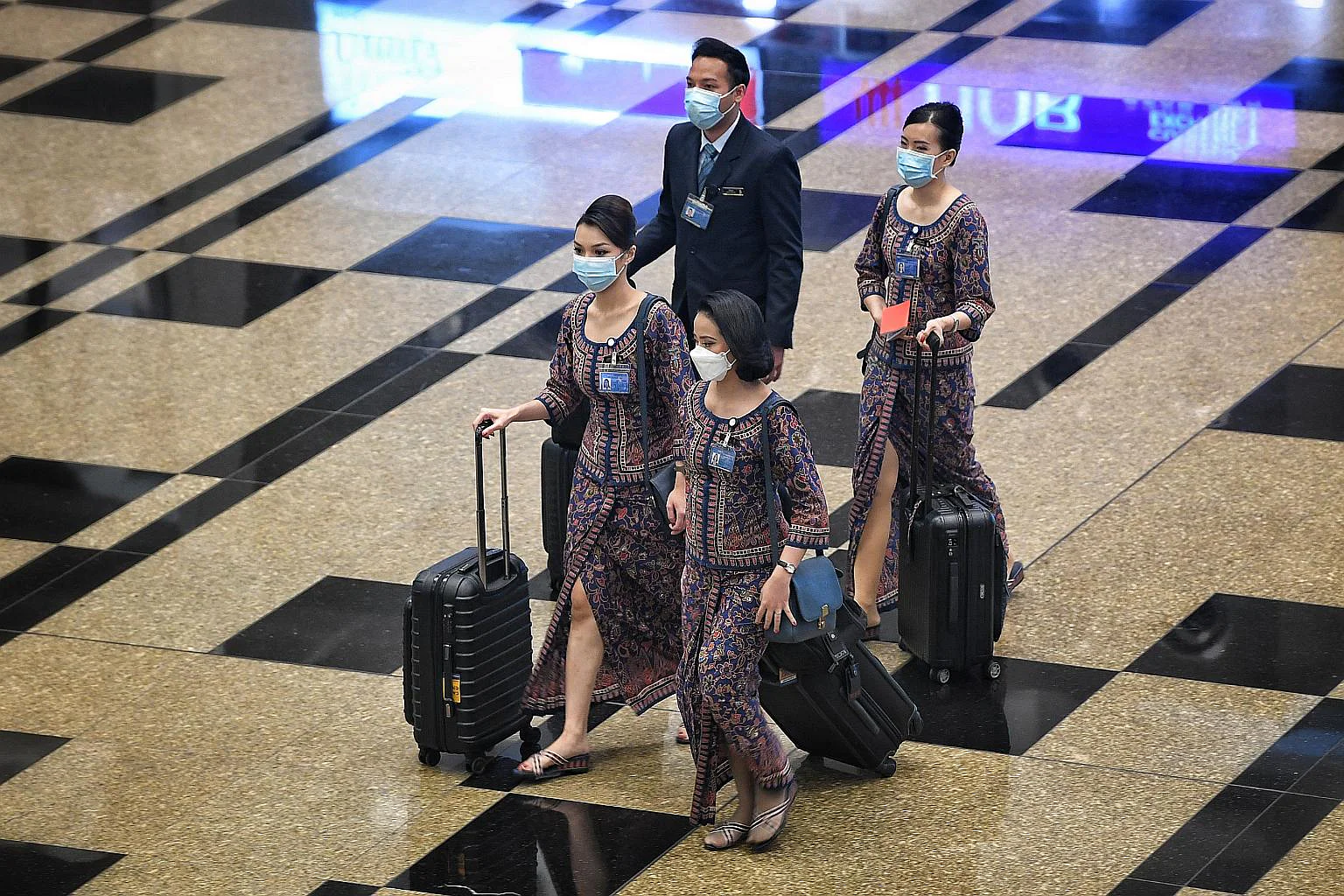September 5, 2022
SINGAPORE – When Singapore Airlines (SIA) resumed hiring in February after a two-year freeze, the national carrier had aimed to recruit 2,000 cabin crew trainees by March next year.
It has hired 1,200 people to date, and now wants to bring in the remaining 800 trainees by December, as air travel continues to rebound from the depths of Covid-19.
With borders open, the airline is also considering restarting hiring from places outside Singapore and Malaysia, which it did pre-Covid-19 in China, Indonesia, South Korea and Taiwan.
Like SIA, other companies in the local aviation sector are pulling out the stops to replenish their ranks.
From ground handlers, to security staff, cleaners, cabin crew and air traffic controllers, almost all types of airport workers are now in strong demand, amid a tight labour market.
Manpower shortages have been a key hurdle for airlines in the Asia-Pacific.
In Australia, for instance, a lack of workers has left airlines and airports unable to keep up with demand since unrestricted travel resumed early this year.
In Singapore, Changi Airport’s handling capacity has largely stayed abreast of growing passenger traffic.
Singapore Institute of Technology Associate Professor Volodymyr Bilotkach, who heads its air transport management degree programme, noted that major Asian markets such as China, Hong Kong, Taiwan and Japan remain restricted, which limits the speed and extent of the recovery in Asia.
Overall Asia passenger traffic is expected to hit only 70 per cent to 80 per cent by year end.
In Europe, it has already surpassed 90 per cent of pre-pandemic levels, outstripping what manpower levels can handle.
“If China were open for business now, we’d be having similar issues to what Europeans are experiencing,” Prof Volodymyr said.
The total number of Changi Airport workers increased from 25,000 to 29,000 people in the first half of the year.
Transport Minister S. Iswaran last week said another 3,500 to 4,000 people are needed, with flight numbers expected to hit 80 per cent of pre-pandemic levels in October.
If achieved, this would bring the total number of airport workers to about 33,000 people – 95 per cent of what it was before.
Sats, Changi Airport’s biggest ground handler, said its staff headcount has exceeded 80 per cent of 2019 levels as at June – on a par with the general manpower recovery in the sector.
To fill some of the 600 positions available, however, it has had to pay “significantly” higher salaries – as much as 30 per cent more – typically for more specialised roles.
Sats did not elaborate on what these roles were when asked.
The positions that it has available include passenger service agents, air logistics specialists, skilled ground support equipment drivers, technical ramp servicemen and aviation catering production.
Mr Musdalifa Abdullah, managing director of ground handler dnata, said the firm conducted a salary benchmarking review for all roles last year to ensure it can attract the people it needs, without confirming if dnata had raised wages.
The firm has filled 375 positions this year to reach 65 per cent of its pre-pandemic headcount.
SIA and the Civil Aviation Authority of Singapore (CAAS), which hires air traffic controllers, did not say whether they have increased pay when asked.
Since the start of the year, SIA has received thousands of applications for cabin crew, with snaking lines in front of its office.

Since the start of the year, SIA has received thousands of applications for cabin crew. ST PHOTO: CHONG JUN LIANG
All of its more than 3,000 pilots have now also been brought back and are on active duty, and only a “small number” had left in the intervening two years.
CAAS has hired 30 air traffic controllers this year, and noted that it had continued recruiting throughout the pandemic.
It is understandable that the most voracious hiring would not be among pilots and air traffic controllers, although Covid-19 has affected these professions too, said Mr Subhas Menon, director-general of the Association of Asia-Pacific Airlines.
He said the greatest shortage in Singapore, as in elsewhere, is more likely in ground handling, hospitality, security and immigration.
During the pandemic, when governments issued financial help to the sector, these outsourced sections of the industry were more likely to have received less help and lose more workers, he noted.
Their skills are also less specific to the aviation industry and so they have more options to join other sectors.
SIT’s Prof Volodymyr said: “Labour is the key. Airlines and airports need to invest into human capital now, in anticipation of traffic recovery, not put it off until the passengers return, which was the mistake Europeans and Americans have made.”

Correction note: An earlier version of this story stated that Transport Minister S. Iswaran said last week that passenger traffic is expected to hit 80 per cent of pre-pandemic levels in October. He was actually referring to flight numbers. We are sorry for the error.


